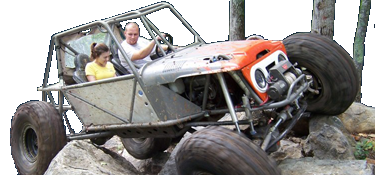Kustom Fabrikated
New Member
- Joined
- Oct 29, 2007
- Location
- Raleigh
Just as soon as I finished typing that I came up with another idea, would a chain driven transfer case mounted beside the transaxle work or would it be too wide too make it worth it.
Well I just came up with another idea that may be more suited with the independant suspensions. The problem that I have had with mounting a transverse engine and transaxle mid engine with a welded diff and driveshafts to both axles was the fact of full time 4x4. The only way I could think of before was to have manual hubs in the front and disengage them, which I didn't feelwas a great option. If I put a splined collar on the front driveshaft with pins where I could disengage the entire axle. The only way that I can see this being feasable is to use Ifs because of the driveshaft would not be moving along with the axle movement. Does anyone have any ideas on how I could improve on this idea or even if there is an actual way to do this that I have not been able to find. I would also like to have more than just 4lo

